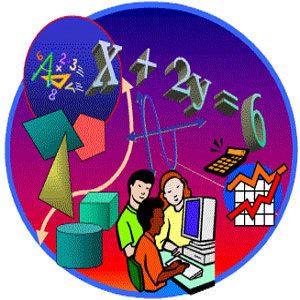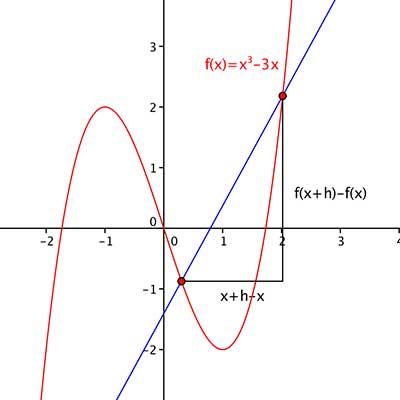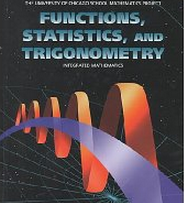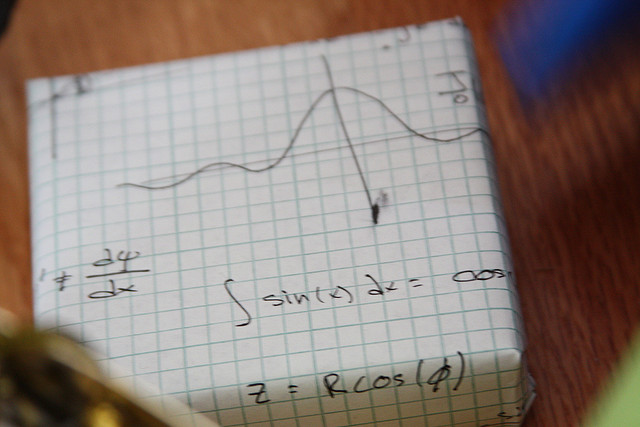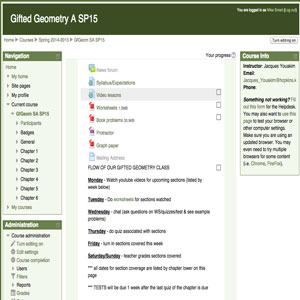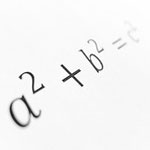Do you have questions about one of our courses? Contact us!
Algebra I is a comprehensive course that provides an in-depth exploration of key algebraic concepts. Through a “Discovery-Confirmation-Practice”-based exploration of these concepts, students are challenged to work toward a mastery of computational skills, to deepen their understanding of key ideas and solution strategies, and to extend their knowledge in a variety of problem-solving applications.
Course topics include an Introductory Algebra review; measurement; an introduction to functions; problem solving with functions; graphing; linear equations and systems of linear equations; polynomials and factoring; and data analysis and probability.
Within each Algebra I lesson, students are supplied with a post-study Checkup activity that provides them the opportunity to hone their computational skills in a low-stakes, 10-question problem set before moving on to a formal assessment. Additionally, many Algebra I lessons include interactive-tool-based exercises and math explorations to further connect lesson concepts to a variety of real-world contexts.
To assist students for whom language presents a barrier to learning, this course includes audio resources in both Spanish and English.
The course is built to the National Council of Teachers of Mathematics (NCTM) standards and is aligned with state standards.
The algebra-linear math course is the first semester of our Algebra course. This algebra content is typically covered in a traditional 8th grade algebra course. Students can take this semester of content over the course of a year.
Functions, Statistics, and Trigonometry is a curriculum developed by the University of Chicago School Mathematics Project. This course is primarily designed to target those students whose “home” school system offers this course. Students who are looking for a course that bridges Algebra 2/Advanced Algebra with Calculus should take Pre-Calculus.
Functions are correspondences or mappings that relate variables. Functions could be considered the most important topic in secondary school mathematics. Statistics and trigonometry are natural applications of functions that help students extend their mathematical skills and maturity as well as prepare them for future study in mathematics. The purpose of this course is to study many types of functions in great detail with a strong emphasis on statistics and trigonometry.
The course enables the student to display, describe, transform and interpret numerical information representations as data, graphs or equations. Using graphing software, the students will visualize functions, explore relations between equations and their graphs, simulate experiments, generate and analyze data and develop limit concepts.
NOTE: This is a textbook-based course with minimal digital activities. It was designed specifically for schools that require FST in their math sequence. You may want to consider Precalculus as the next course after Algebra 2 to prepare for Calculus. Please consult your counselor or NSO to determine the math sequence required for your school.
This course includes a wide variety of activities that provide students with opportunities to discover real-world applications of geometry. The academic Math Standard V: Spatial Sense, Geometry and Measurement is embedded in the course.
The Gifted Algebra course is designed to provide challenging mathematics for 6th and 7th grade students who need greater depth and breadth in their approach to learning mathematics. This course integrates two curricula: Connected Mathematics Project and Discovering Algebra. These curricula provide engaging, discovery-based investigations and are highly consistent with state and national standards-based efforts to improve school mathematics. Students work with data-rich, real-world situations in a curriculum that places algebra in an applications-based context and where investigations precede the introduction of formulas and expressions.
A student may need to take a qualifying test prior to enrolling into this class. To learn more about the Gifted math courses please click and go to our Gifted Math page.
The Gifted Geometry class is designed to provide challenging mathematics for 7th and 8th grade students who need greater depth and breadth in their approach to learning mathematics. This course uses the Discovering Geometry: An Investigative Approach curriculum. It is for students who are looking for a challenging, fast-paced environment to explore mathematics.
Students explore geometric relationships with a wide variety of tools, including compasses, computers, and graphing calculators. Instead of just memorizing rules and definitions, students perform constructions, measure figures, observe patterns, discuss their findings, write their own definitions, and formulate their own geometric conjectures.
The Gifted Math 7 course is designed to challenge gifted learners, giving them an opportunity to examine the core ideas of mathematics with greater depth. The seventh grade curriculum that is used is an Apex curriculum called Math 7-Math Foundations II. This course encourages students to become better thinkers, doers, and communicators. Upon successful completion of this course, learners will have made strong connections between mathematics and the world around them.
The content covered in this course includes:
Semester A
Integers and Operations, Fractions and Operations, Decimals and Operations, Percents, ratios, proportions and Rates, The Language of algebra, Solving equations with addition and subtraction, Solving equations with multiplication and division, Exponents
Semester B
Solving equations with roots and powers, Multistep equations, Linear equations, Systems of linear equations, Distance and angles, Area, Surface area and volume, Data analysis and probability
Precalculus is a course that combines reviews of algebra, geometry, and functions into a preparatory course for calculus. The course focuses on the mastery of critical skills and exposure to new skills necessary for success in subsequent math courses. The first semester includes linear, quadratic, exponential, logarithmic, radical, polynomial, and rational functions; systems of equations; and conic sections. The second semester covers trigonometric ratios and functions; inverse trigonometric functions; applications of trigonometry, including vectors and laws of cosine and sine; polar functions and notation; and arithmetic of complex numbers. Within each Precalculus lesson, students are supplied with a post-study “Checkup” activity, providing them the opportunity to hone their computational skills by working through a low-stakes problem set before moving on to a formal assessment. Unit-level Precalculus assessments include a computer-scored test and a scaffolded, teacher-scored test. The content is based on the National Council of Teachers of Mathematics (NCTM) standards and is aligned to state standards.
The older we get, the more it seems like we are bombarded with data and information. In this class we will try to teach you to better interpret this information. If you are willing to work hard, use your time wisely, seek help when needed, and become involved, you should be able to find success in Probability and Statistics.

